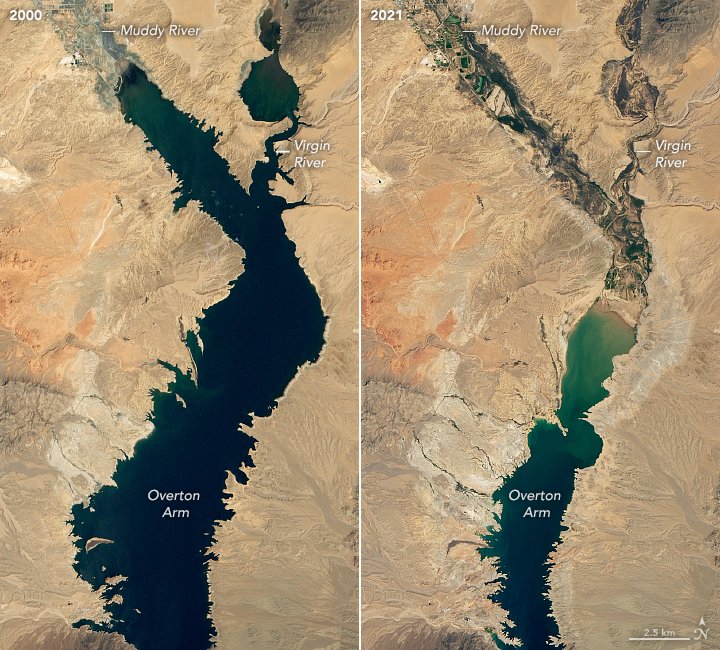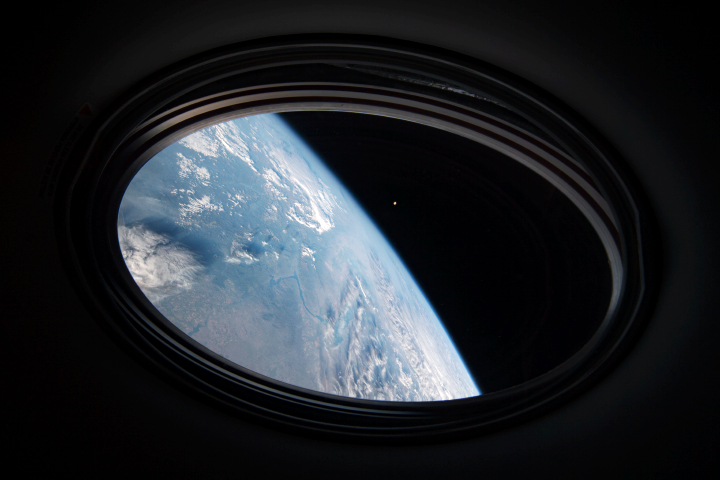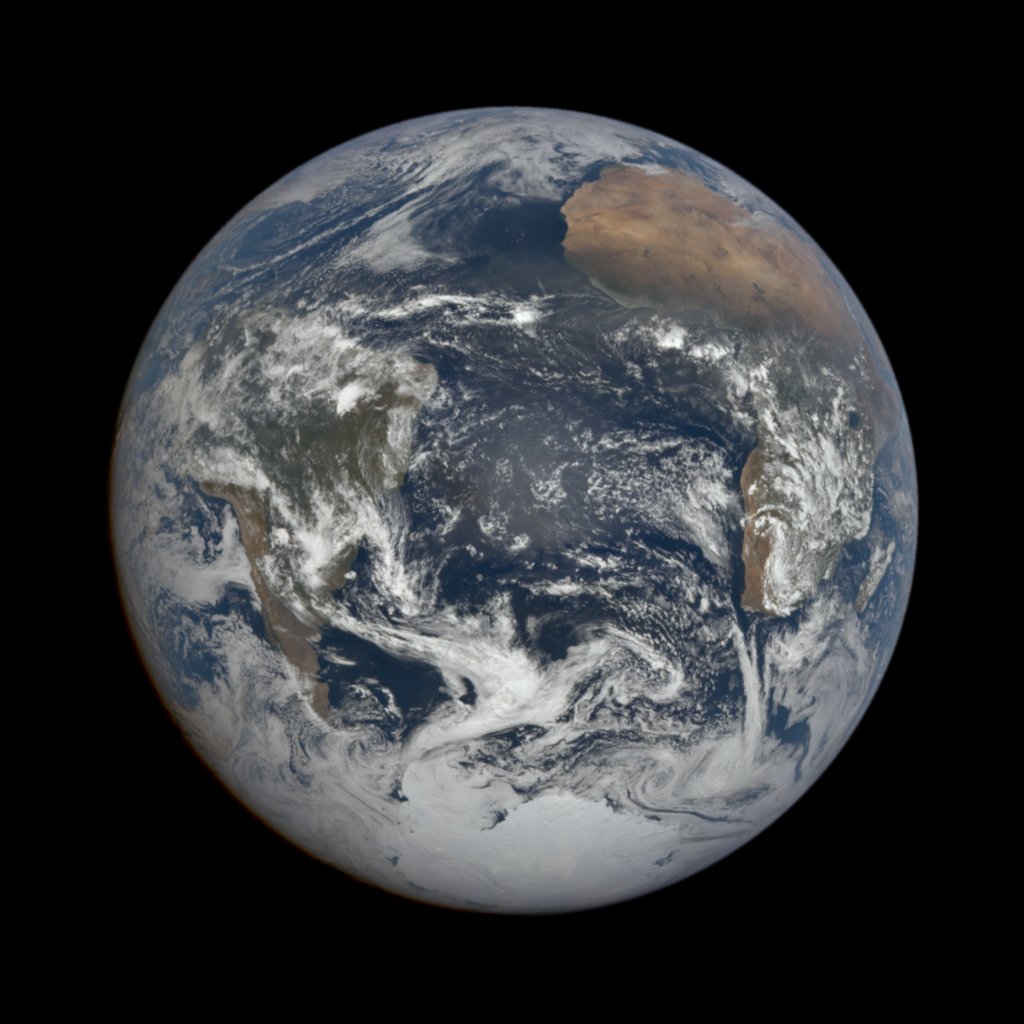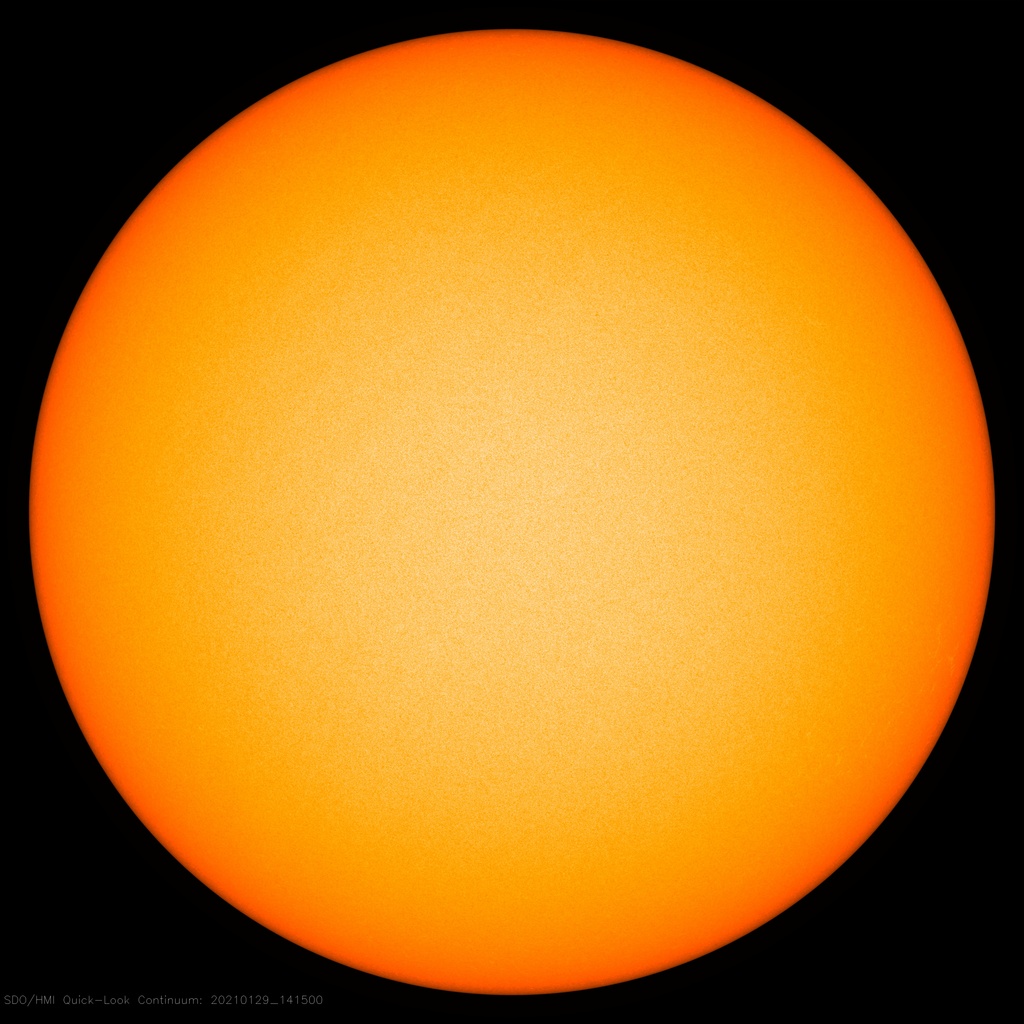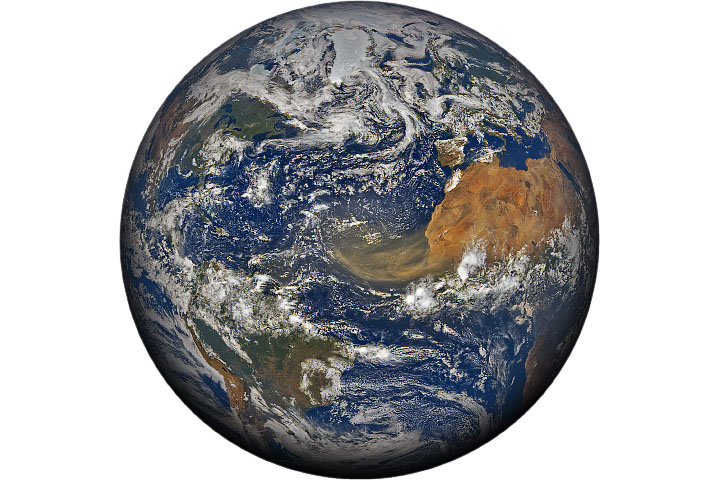
Lake Mead water levels have dropped to a record low. These #Landsat images show the reservoir in 2000 (left) and 2021 (right). earthobservatory.nasa.gov/images/148758/… 



Lake Mead is the largest reservoir in the United States and part of a system that supplies water to at least 40 million people across seven states and northern Mexico. It stands today at its lowest level since Franklin Delano Roosevelt was president. 

• • •
Missing some Tweet in this thread? You can try to
force a refresh

